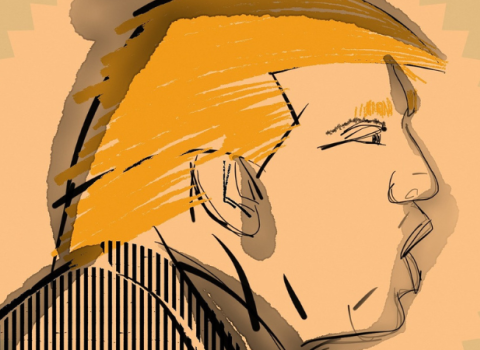Horizon projects can have more impact if they work together. With multi-project calls on the rise, why not draft them together?

Photo credits: Vardan Papikyan / Unsplash
The European Commission already asks projects funded under the same Horizon calls to ‘cluster’ and find ways to work together. Now, a group of researchers working in aquatic resources has taken this a step further by writing multiple proposals together and submitting them under the same call topics.
According to Ivo Grigorov, grant adviser at the Technical University of Denmark's National Institute of Aquatic Resources, it’s unrealistic to expect two projects developed independently to work well together once they kick off. “We're thinking how you can jump to the stage before: if a call is asking for two projects, let's see if we can design two highly complementary concepts, and if they are good enough, both of them will get funded.”
Grigorov and his colleagues have been pondering this idea for almost a decade. Their first attempt came in 2018, when the aquatic resources community sat down together to draft a proposal for a project filling knowledge gaps on mesopelagic organisms, which live deep in the ocean, and determining if they could be exploited in ecologically sustainable ways.
The researchers realised they had more ideas than they could fit in one €6 million project and decided to split into two groups. MEESO focused on fundamental research, while its sister project Summer proposed applied research, in particular analysing options for safely accessing deep ocean resources.
Xabier Irigoien, a researcher at AZTI, the Basque research centre for marine environments and food, and lead investigator for Summer, says the sister projects ran smoothly, but the synergies did not go far enough. In Horizon 2020, clustering was not yet well integrated into the EU research programme, which meant they still had to duplicate some efforts.
So, Grigorov and his colleagues kept working on the approach. Their latest attempt consisted of three projects, two of which were selected for funding, with grants due to be signed in the coming weeks.
The art of clustering
The Commission has been promoting project clustering for some time, but only made it a priority in Horizon Europe. The share of calls which fund multiple projects has been rising steadily. Grigorov calculates that in the 2025 work programmes for Mission Ocean and Cluster 6, which funds research into natural resources, more than 60% of the funding is tied up in multi-project calls.
But different parts of Horizon Europe handle clustering in different ways. Some spell out how they want projects to combine resources, others do not. In Cluster 5 for climate research, the work programmes simply state projects should cooperate. In Cluster 6, the instructions are more specific, setting out parts of the EU research programme with which links should be created.
Clustering is not at all straightforward once grants have been signed and plans largely set in stone, legally and financially. Some flexibility is allowed, but many managers are wary of making changes, which can be difficult to handle administratively.
Patricia López-García, a researcher at the National Oceanography Centre in the UK, worked on Horizon 2020 sister projects TechOceanS and NAUTILOS, which were drafted separately but then attempted to work in tandem.
This was difficult to do, beyond holding joint conferences, training sessions and meetings with stakeholders. “Both projects’ partners were focused on fulfilling their tasks and, even after having a few meetings, we couldn’t find too many actions in common,” she said.
López-García believes they could have benefitted from pre-defined shared tasks and objectives, such as joint deployment to test technologies, which could have increased the projects’ impacts and reduced costs.
For Grigorov, the answer is clear. “If you start running together, the synergies are just more natural, they're more effective,” he said. “We don't just go to each other's meetings. We produce knowledge very much in the same direction.”
But he acknowledges this requires a change in culture with respect to Horizon Europe proposal writing, which tends to happen behind closed doors. “We change a little bit the old myths that writing these ideas confidentially, in secret is the only way to win,” he said. “That’s true sometimes, but I don’t think it’s the norm anymore.”
Creating the right conditions
The big question is how far this can go. Projects can run in similar timeframes with complementarities programmed in, without clashes and repetitions. And they can be designed to include joint activities and resources. For example, Grigorov said, setting up a mobility fund has been a great tool to guarantee there is money for travel if new needs emerge.
Even at the proposal drafting stage, there can be different levels of integration, from simple high-level talks between the competing groups about creating synergies to carefully crafting selected sections together.
Grigorov and his colleagues are now working on the idea of drafting two identical projects that differ only in the ‘excellence’ part of the proposal, which sets out the science. This means the rest, covering impact and implementation, would run completely in sync.
For Irigoien, this is where the beauty of the approach lies. With smaller but synchronised projects, researchers can run teams that are really specialised in the problem they are trying to solve. “You could have teams that are addressing specific parts of the challenge and running it more efficiently,” he said.
This way, projects can stay administratively leaner. The problem with big projects, which the Commission tends to promote, is that management can become unsustainable and costly. Simply organising a meeting for 30 partner organisations from around the continent can turn into a full-time job.
While these experiments in pre-emptive clustering have borne fruit, there are still pitfalls that need to be negotiated. One is intellectual property, with coordinated bidding necessarily exposing partners’ knowhow to outside eyes. According to López-García, if open proposals were to become best practice in Horizon, some work packages relating to the excellence sections should remain confidential, to preserve intellectual property integrity.
Another potential problem involves dependencies. If one of the projects does not make it through, the other must still be able to function. This makes sense in practice, but Irigoien says it may be an impediment when it comes to delivering. Avoiding dependencies can once again introduce duplications.
And even with a perfect plan, implementation can be a struggle in a programme not designed for this level of clustering. According to Grigorov, some projects have struggled to communicate their plans to the Commission because they were assigned two different project officers within the Commission. This can stall synergies. Communication with one project officer for both projects would be much easier.





 A unique international forum for public research organisations and companies to connect their external engagement with strategic interests around their R&D system.
A unique international forum for public research organisations and companies to connect their external engagement with strategic interests around their R&D system.